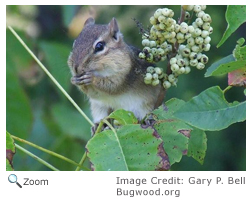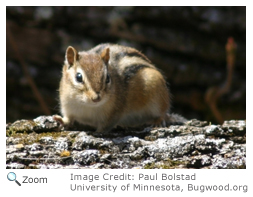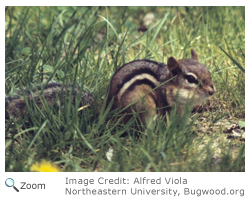Diet

Most of the eastern chipmunk's diet is made up of nuts, acorns, seeds, mushrooms, fruits, berries and corn. It also eats insects, bird eggs, snails and small mammals like young mice. In winter, it stays in its den. The eastern chipmunk doesn't truly hibernate, but it does spend a lot of time sleeping. It may wake up every few weeks to eat the food it has stored.
Life Cycle

Eastern chipmunks mate in early spring. The female usually has one litter a year with between three and five young. In some areas, a female may have a second litter. The young will come above ground when they are about six weeks old.
Behavior

The eastern chipmunk spends a large part of its waking hours gathering and storing food for the winter. Eastern chipmunks are also very vocal and can be heard chattering as they gather food. In fact, they get their name chipmunk from the "
chip-chip" sound that they make!